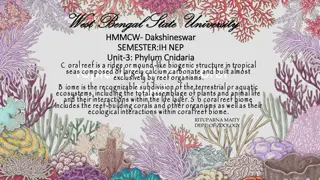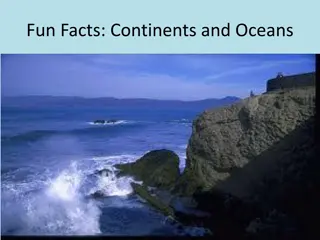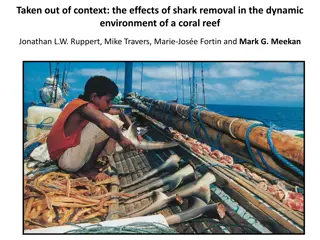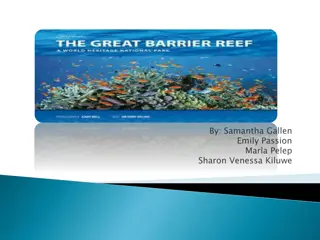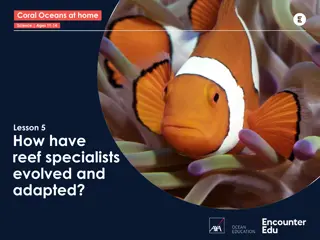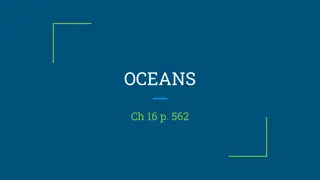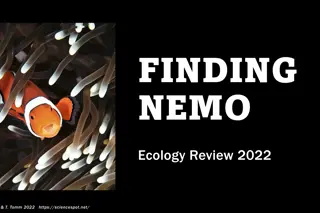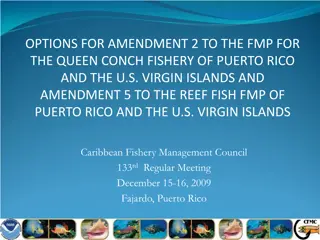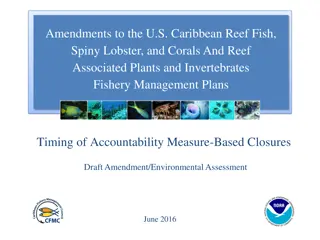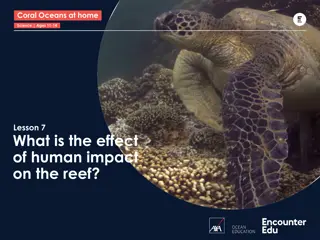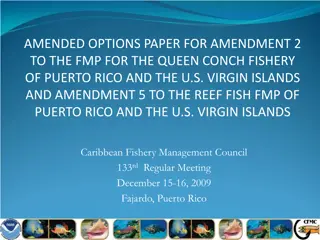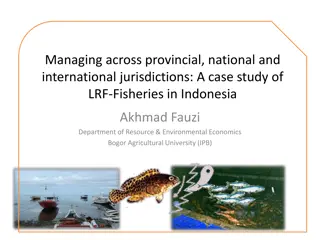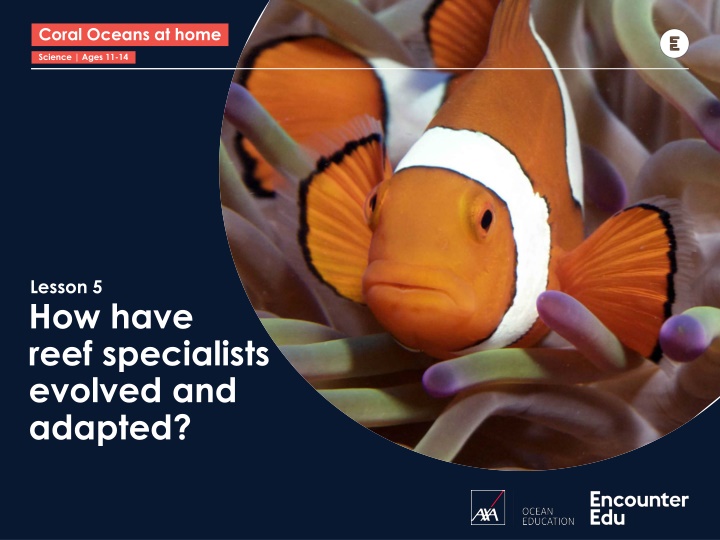
Exploring Reef Specialist Evolution and Adaptation
Discover how reef specialists have evolved and adapted to survive in their unique underwater ecosystem. Learn about the specific adaptations used by coral reef species, the importance of adaptation for survival, and the various strategies employed on the reef. Dive deep into the world of coral animals and explore their ultimate adaptation. See how different animals have adapted to thrive on the reef and design your own ultimate coral animal. Uncover the secrets of survival in the coral oceans.
Download Presentation

Please find below an Image/Link to download the presentation.
The content on the website is provided AS IS for your information and personal use only. It may not be sold, licensed, or shared on other websites without obtaining consent from the author. If you encounter any issues during the download, it is possible that the publisher has removed the file from their server.
You are allowed to download the files provided on this website for personal or commercial use, subject to the condition that they are used lawfully. All files are the property of their respective owners.
The content on the website is provided AS IS for your information and personal use only. It may not be sold, licensed, or shared on other websites without obtaining consent from the author.
E N D
Presentation Transcript
Coral Oceans at home Science | Ages 11-14 Lesson 5 How have reef specialists evolved and adapted?
Lesson 5: How have reef specialists evolved and adapted? Learning objectives 1. Identify specific adaptions used by coral reef species 2. Explain the need for adaption for survival 3. List a range of adaption strategies used on the reef 4. Create the ultimate coral animal using prior knowledge 5. Consolidate understanding of adaption on the reef
Lesson 5: How have reef specialists evolved and adapted? How many stonefish can you see?
Lesson 5: How have reef specialists evolved and adapted? Can you see them now? 3 2 How have they adapted to survive on the reef? 1
Lesson 5: How have reef specialists evolved and adapted? How have these coral types adapted to live on different parts of the reef? Amount of sunlight Exposure at low tide Wave strength
Lesson 5: How have reef specialists evolved and adapted? Coral has also adapted to the nutrient poor waters of the tropics by forming a symbiotic relationship with zooxanthellae. Example of coral symbiosis
Lesson 5: How have reef specialists evolved and adapted? It is not the strongest of the species that survives, nor the most intelligent that survives. It is the one that is the most able to change Charles Darwin
Lesson 5: How have reef specialists evolved and adapted? Dive 4 Ultimate adaptation We are going to find out how different animals have adapted to survive on the reef. Then you will be designing the ultimate coral animal.
Lesson 5: How have reef specialists evolved and adapted? These big-eyed trevally are extremely fast swimmers. This means that they can escape from bigger predators.
Lesson 5: How have reef specialists evolved and adapted? Sea cucumbers have a defense trick of launching their guts out of their anus to scare of predators. Sea cucumbers are designed a bit like hoovers, sucking up the sandy bottom and taking out any food.
Lesson 5: How have reef specialists evolved and adapted? As we saw before, some animals use camouflage to hide from predators and to sneak up on prey, like these stonefish.
Lesson 5: How have reef specialists evolved and adapted? Mantis shrimps hide in small holes in the reef, waiting to ambush their prey. They use their claws to smash or spear small fish.
Lesson 5: How have reef specialists evolved and adapted? This starfish has a special way of eating coral, by sucking onto the coral and throwing up its stomach and special enzymes to dissolve the coral polyps. The crown of thorns starfish is covered with spines and is also poisonous to protect it from predators.
Lesson 5: How have reef specialists evolved and adapted? This parrotfish has a special beak to scrape the coral and algae from the reef. Why do you think it is called a parrotfish?
Lesson 5: How have reef specialists evolved and adapted? This parrotfish has developed a safe way of sleeping. At night it envelopes itself in a mucus bubble. This stops predators smelling it out on the reef.
Lesson 5: How have reef specialists evolved and adapted? Can you see how this manta ray is designed to sieve the sea for microscopic algae and animals?
Lesson 5: How have reef specialists evolved and adapted? How is this tiger shark designed to survive on the reef? How does it get its food?
Lesson 5: How have reef specialists evolved and adapted? This clownfish has developed a symbiotic relationship with the sea anemone. The sea anemone provides protection from predators, and the clownfish wards off other fish who try to eat the anemone.
Lesson 5: How have reef specialists evolved and adapted? Dive log Complete your dive log Choose three of the animals we looked at today Describe the characteristics that make them so well adapted to life on the coral reef Remember to get your buddy and dive master signatures!
Lesson 5: How have reef specialists evolved and adapted? Image credits Slide Title Attribution 6 Zooxanthellae By Emma Kennedy (University of Exeter) 6 Coral polyp By OIST All other images are courtesy of Catlin Seaview Survey/Digital Explorer/Encounter Edu


